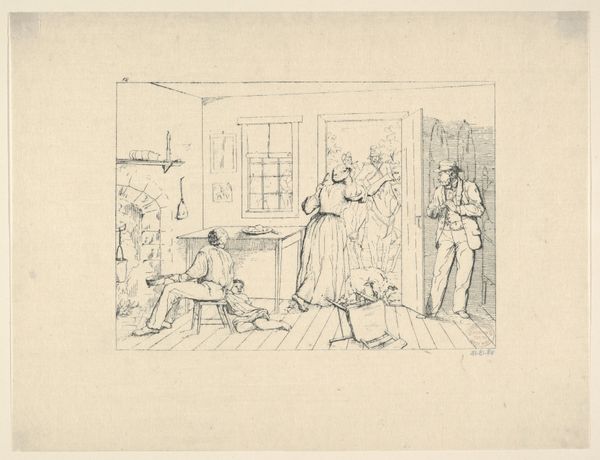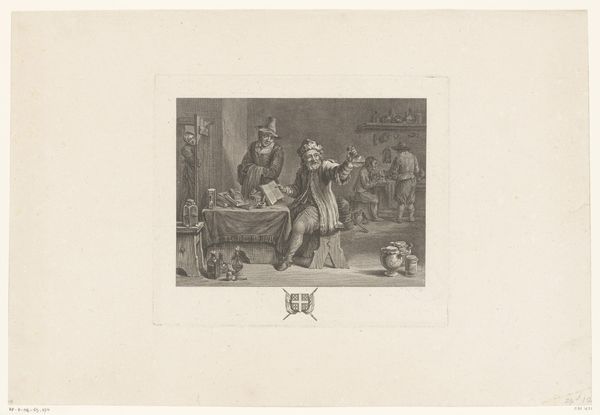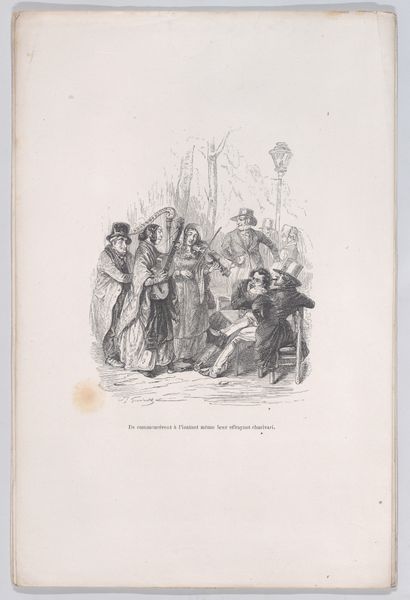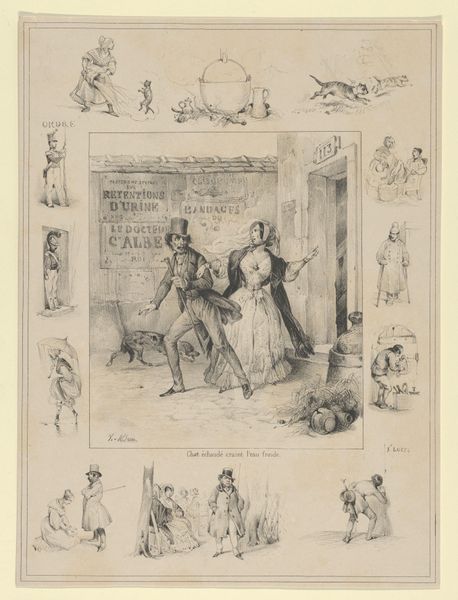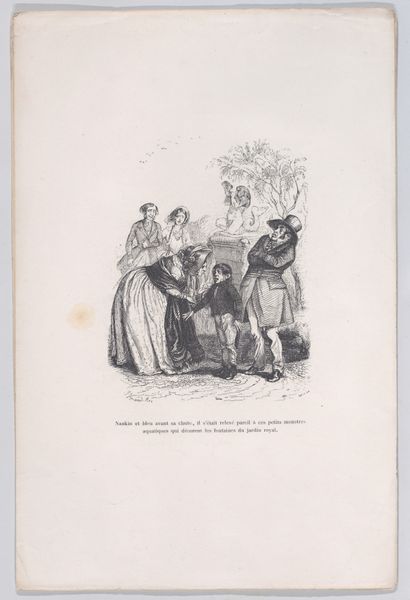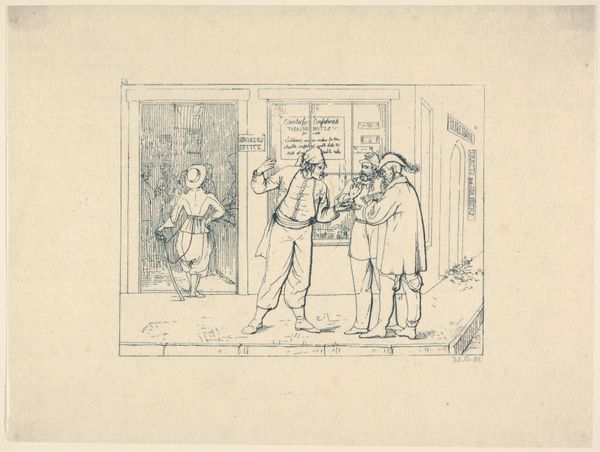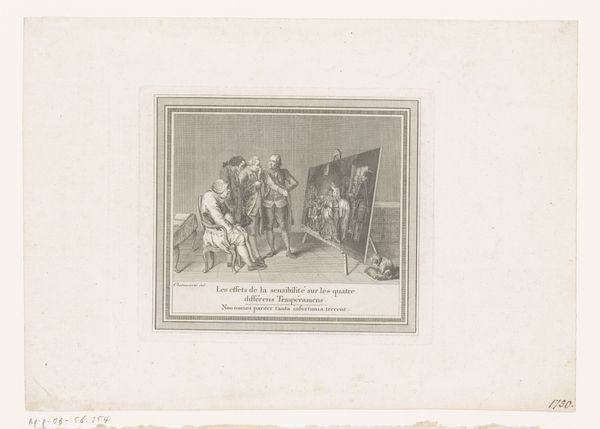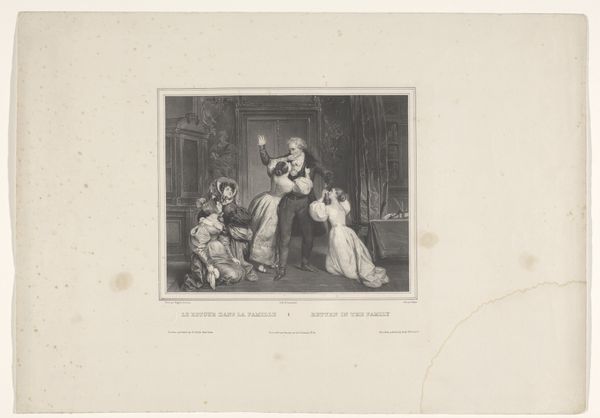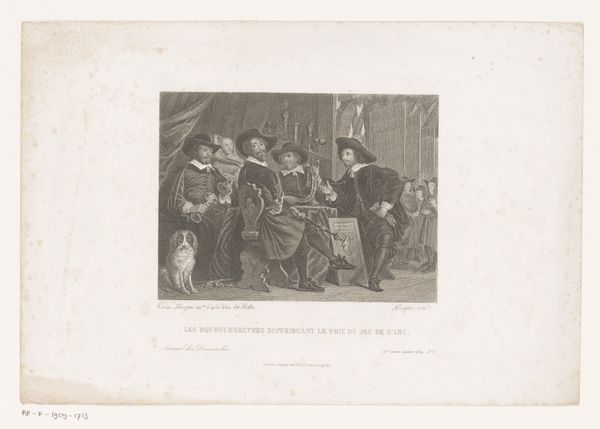
print, engraving
#
narrative-art
# print
#
genre-painting
#
engraving
Dimensions: 186 mm (height) x 252 mm (width) (bladmaal)
Editor: So, this is "Skandinavernes hjælpekasse i Rom," or "The Scandinavians' Relief Fund in Rome," an engraving from 1878. The print work is really detailed, capturing the clothing textures so well. What stands out to you? Curator: Well, focusing on the materials, let’s consider why an engraving, a process of making multiple reproductions, was chosen. It wasn't about creating a unique object. Instead, its strength lies in the broad distribution of this image. The “relief fund” box at the center seems to suggest anxieties around poverty and social mobility. Editor: So, you're suggesting the material choice emphasizes accessibility and distribution related to wealth? How does the context of the production relate to the subject matter? Curator: Exactly. This print isn’t just showing us a scene; it's also participating in a larger system of resource management. The “Scandinavian Relief Fund” surely served specific, probably class-based, groups of artists abroad. We see consumption meeting production, with these characters literally “paying” for their continued work in Rome. Does that shift how you see it? Editor: It really does! Thinking about how the image circulated gives it a completely different meaning, seeing it less as a record and more as an element of how resources moved through a particular community. Curator: And think about the engraver's labour itself – painstaking, precise work to produce an image meant to generate… what kind of return for that labour, exactly? It points to many different hands in this “relief.” Editor: Right, all that labor just to get a little back? Thanks, it's insightful to think about beyond the aesthetic value of this piece.
Comments
No comments
Be the first to comment and join the conversation on the ultimate creative platform.
